Can a micro-CT scanner produce a legible image of a cuneiform tablet in an unopened envelope?

Not everyone can read cuneiform. Those who can, often specialize in a certain language or period, leaving many texts to their colleagues. And then there are a few cuneiform texts that even the best Assyriologists are unable to read – because they are invisible to the naked eye.
In ancient Mesopotamia, some 4000 years before the invention of the secure PDF file, administrative documents, contracts, and loan agreements were often put in a clay envelope. A brief version of the content – verified by witnesses’ seal rollings – was then written on the clay casing, which protected the tablet inside against fraudulous changes. If anyone ever wanted to check the summary against the original text, they would have to break the envelope. Apparently, this need arose infrequently, as many still-encased tablets are present in museum collections of cuneiform texts.
NINO holds the largest collection of cuneiform texts in the Netherlands: the Böhl Collection. Recently Rients de Boer, Deputy Curator of the Böhl Collection, was asked to provide a few clay tablets to be scanned at Delft University of Technology. Unlike letters printed on paper, cuneiform signs are three-dimensional; they have been pressed into the clay tablet with a stylus. A micro-CT scanner can produce a digital model of a clay tablet with its text.
A CT scanner can “see through” most materials, including clay. But can it also distinguish between a tablet and an envelope made of the same material? The Böhl Collection holds a few tablets in envelopes; some have been opened, some not. Can the scanner produce a useful image of a tablet in an unopened envelope?
Dominique Ngan Tillard scanned an example from the Ur III Period: an intact envelope containing a tablet that has been hidden from view for some 4000 years. Researchers in the past would (carefully) break clay casings to be able to read the tablet inside. Nowadays Assyriologists prefer to keep ancient objects intact, but this means encased texts must remain unread. Until last Wednesday, that is – when the scanner produced a perfectly readable image. Rients was able to confirm that the text on the envelope and on the tablet are not identical. The envelope mentions a quantity of sesame seeds, 15,280 litres to be exact, delivered by a certain Lu-Ningirsu. The text on the tablet specifies that the delivery was actually made in two instalments.
Our conclusion: non-invasive CT scanning provides ample data for compiling a high-resolution three-dimensional model. The tiny amount of free space between tablet and envelope allowed Dominique to virtually separate them, revealing the otherwise invisible text on the tablet. In our case, the new text provides additional information to what is written on the envelope.
We look forward to discovering many more unread texts!
Video by Leiden University: Rients and Dominique scanning our clay tablet.
More on the scanning process in this news article in Delta, Delft University’s newspaper, and in “Cuneiform in a scanner” in Delft Outlook.
Video by Dominique Ngan-Tillard, showing and explaining the virtual cross-sections, the models of envelope and tablet with their texts, as well as voids and inclusions:
The master text on the tablet inside actually has a few more details than the text on the envelope. Rients de Boer translates:
Envelope: Received 15,280 liters of sesame seeds in the “gur” measure of the king from Lu-Ningirsu, son of Bazi. Signed by Ur-Abba. Date: the year Enmaḫgalanna, in which the En-priestess of Nanna was installed (= regnal year 4 of Amar-Suen, King of Ur = ca. 2041 BCE).
The seal on the envelope reads “The scribe Ur-Abba, son of Bazi” and shows a standing man who is introduced to a seated deity by a protective goddess.
Tablet: 11,050 liters of sesame seeds in the “gur” measure of the king, the first time; 4,230 liters the second time – from Lu-Ningirsu, for the labor of the female workers, Ur-Abba has received. Date: the year Enmaḫgalanna, in which the En-priestess of Nanna was installed (= same as on envelope).
Note that this document from ancient Girsu, a province in the Kingdom of Ur, is a delivery made from brother to brother: Lu-Ningirsu and Ur-Abba have the same father. The tablet specifies that the sesame was delivered in two instalments, and that it was payment for work done by “the female workers”. One might imagine that Lu-Ningirsu had commissioned textiles, beer, or other commodities from a workshop owned by his brother Ur-Abba, and paid him in produce from his sesame farm.
